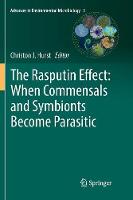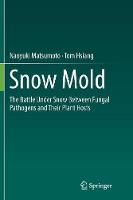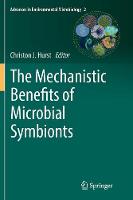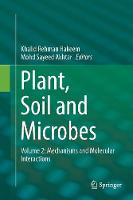Rasputin Effect: When Commensals and Symbionts Become Parasitic
 -15%
portes grátis
-15%
portes grátis
Rasputin Effect: When Commensals and Symbionts Become Parasitic
Hurst, Christon J.
Springer International Publishing AG
05/2018
357
Mole
Inglês
9783319802886
15 a 20 dias
5621
Descrição não disponível.
How well do surrogate hosts serve as model systems for understanding pathogenicity.- Host-symbiont relationships: understanding the change from guest to pest.- Opportunistic infections in elasmobranchs.- Bacterial opportunistic pathogens of fish.- Fungal secondary invaders of fish.- Opportunistic pathogens of marine mammals.- Opportunistic pathogens of terrestrial plants.- Non-spore-forming bacterial entomopathogens - their toxins, hosts and the environment: why be a pathogen.- Opportunistic infections of avians.- Opportunistic algae, fungi, and ichthyosporea associated with mammalian livestock disease.- Opportunisitic pathogens of humans.
Este título pertence ao(s) assunto(s) indicados(s). Para ver outros títulos clique no assunto desejado.
Commensalism;Host-symbiont relationships;Opportunistic pathogens;Parasitism;Symbiosis;Opportunistic pathogenicity;Opportunistic infections;Bacterial opportunistic pathogens;Fungal secondary invaders;Bacterial entomopathogens;Opportunistic algae;Opportunistic fungi;Opportunistic ichthyosporea;Opportunistic human pathogens
How well do surrogate hosts serve as model systems for understanding pathogenicity.- Host-symbiont relationships: understanding the change from guest to pest.- Opportunistic infections in elasmobranchs.- Bacterial opportunistic pathogens of fish.- Fungal secondary invaders of fish.- Opportunistic pathogens of marine mammals.- Opportunistic pathogens of terrestrial plants.- Non-spore-forming bacterial entomopathogens - their toxins, hosts and the environment: why be a pathogen.- Opportunistic infections of avians.- Opportunistic algae, fungi, and ichthyosporea associated with mammalian livestock disease.- Opportunisitic pathogens of humans.
Este título pertence ao(s) assunto(s) indicados(s). Para ver outros títulos clique no assunto desejado.
Commensalism;Host-symbiont relationships;Opportunistic pathogens;Parasitism;Symbiosis;Opportunistic pathogenicity;Opportunistic infections;Bacterial opportunistic pathogens;Fungal secondary invaders;Bacterial entomopathogens;Opportunistic algae;Opportunistic fungi;Opportunistic ichthyosporea;Opportunistic human pathogens







